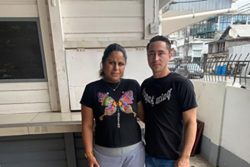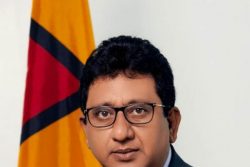Dear Editor,
Reference is made to Rev Cecil Gideon’s letter ‘Burnham achieved nothing’ in Stabroek News, of August 10. Mr Linden FS Burnham made mistakes, like so many other great leaders, but no one can honestly say he did not do a lot for his country and was not truly a nationalist committed to the development of Guyana. There are two main sectors that he did a lot for, but because of the country’s polarized politics the main beneficiaries of these sectors will not admit the truth. I refer to rice and sugar. It was Mr Burnham who laid some notable foundations that saw the development of these two industries.
The development of bulk sugar was his wisdom. Initially sugar was exported by bags. The exportation of sugar in bulk made it easier for transporting larger quantities. Mr Burnham promoted the increased exportation of sugar by fighting for the expansion of an overseas market in the Caribbean. He promoted the establishment of a minimum wage policy in the sugar industry, under Minister of Labour, Mr Winslow Carrington. Sugar workers’ wages became comparable to those of their working peers in the public sector. Prior to this, sugar workers were paid less than their peers in the public service.
With the introduction of the National Insurance Scheme in 1969 sugar workers began enjoying benefits such as sickness and maternity, and the workers compensation benefit, which became the industrial benefit branch and was more receptive to meeting the benefit needs of sugar workers who suffered from many accidents in the industry.
During the logies’ era Mr Burnham saw to better housing conditions and health facilities on the sugar estates. He toppled the class barriers in the sugar industry which give the sugar workers access to the same facilities as the estates’ upper echelons. For example there was the equal use of the community centres. It was during Mr Burnham’s era that Guyana produced famous cricketers from the sugar industry. They were Messrs Rohan Kanhai, Basil Butcher, Joe Solomon, Ivan Madray and others. These gentlemen went on to become great West Indian cricketers. It was Mr Burnham, through his relationship with Barbados Prime Minister, Mr Errol Barrow, that realized West Indian great, Mr Clyde Walcott, playing a social welfare role, managing the community centres and promoting the social welfare of the sugar estates’ sporting community.
The National Sports Council was established by Mr Burnham which accommodated the needs of the sugar estate areas. Under the chairmanship of Mr Kenneth Wishart, and Minister of Sport, Ms Winifred Gaskin, all aspects of sport were accommodated, where sugar workers were represented on the same body and enjoyed the benefits of the sports community like any other area in Guyana.
In the rice industry, Mr Burnham established drainage schemes, such as the Mahaicony Abary Development Scheme (MARDS) in Demerara/Berbice. This scheme dealt with the promotion of better rice varieties, for example, the Bluebell replaced the long grain variety, which produced more crops per year, thus enhancing the rice production rate. Prior to that rice production was a long drawn out process, coupled with few government mills, such as at Mahaicony and Anna Regina, and the private mills. Mr Burnham went to the Eastern bloc and brought multistage mills which stopped the need for paddy soaking and made possible faster production of rice. He installed rice mills at Wakenaan, Somerset & Berks, Paradise, etc. Persons were sent abroad to train in the management of these mills. The Tapakuma Irrigation Project (TIP) in Essequibo realised the installation of pump stations which effected the necessary drainage and retained water for the early growth of paddy. At the Caricom level he promoted the sale of Guyana’s rice to Caribbean countries.
Rice farmers had access to borrowing money from the state created and owned Guyana National Cooperative Bank (GNCB) and cooperative societies worked as collateral for those rice farmers to borrow money. He brought Dr Powar, a specialist in the rice industry from India, to improve the quality of rice and reduce the length of time for plants’ growth. With this injection there was more rice production.
Mr Burnham went on meet the people tours in the sugar and rice industries to settle land disputes and addressed the concerns of the communities.
Regrettably the sugar union was used as a political tool to encourage workers to strike. Young sugar canes were burnt during this era and contributed to sabotaging the country’s gross domestic product. Supporters were also encouraged not to plant rice.
There was much vandalism to interfere with the rice industry performance. For example, kokers and sluices were burst which meant farmers suffered and this practice interfered with the targeting of the industry’s local and export markets. Not being able to meet targets compromised the country’s projection for trading with other countries and maintaining local supplies.
As we talk about Mr Burnham in our history, let us be honest about his contributions and resist the urge to be untruthful and spread the hate.
Yours faithfully,
Humphrey Charles







